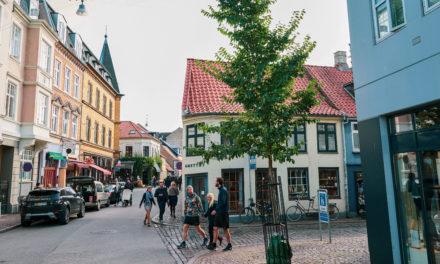Designing the Infinite Team Network
Originally published on April 05, 2019This week, we were yet again in a creative development meeting with one of our partners in the UK. Next week, we’ll do a follow-up session. For each of these, none of us will leave our respective hometowns of Aarhus or London. Our travel time is down to the time it takes us to pick up our laptops and go from the second to the third floor. Mind you; these are not your regular business calls; these are creative sessions with all that it takes to develop ideas and refine them into concepts.
A treasure chest of expertise
Some people are still surprisingly hesitant of diving into the treasure chest of expertise and potential that is made possible by a world being made ever smaller by technology. We all have a vast pool of incredibly talented people available that are no further away than whatever connected device is your favourite portal to the world. For anyone who delivers expertise as a service, that means that neither competitors or collaborators may be in your neighbourhood, city, country or even region of the world.
At AdventureLAB, we have wholeheartedly embraced this global community of creativity, to the point of it being part of our organisational DNA. That is why we are capable of either setting up or joining teams of international resources, customised to address any challenge or opportunity for the people we have the privilege to work with around the world. When people ask, how many we are at the LAB, the response may very well be, how many are needed.
Agility and innovation
Organising one’s company as part of a bigger infrastructure of collaborators increases agility and innovative capabilities.
Agility because your expenses dynamically equal your income, almost to the point of 1:1. If you are an agency owner looking for someone to court you for merger or acquisition, your agility factor when a certain part of your workforce is freelancers will be favourable to your value.
Innovative capabilities, because you will continuously get you and whatever team you may have, exposed continually to new ideas and new perspectives. In doing so, you will avoid the innovation dry-out that some organisations eventually experience, because their team basically are the same people doing the same things following the same ways. Habits will form without any form of inspiration, disruption or challenge, and habits die hard.
Team networking by design
Speaking for ourselves, we see our own organisation as part of an extensive network, rather than a company that has a network. That might sound like mere semantics to you, but there is a difference in noting that being part of a network is also accepting that one may not always be the leader of collaboration and that if you do not serve the network, it will not serve you. To make your organisation part of what is potentially a network superstructure, you will need to step beyond the line of thinking of your connections as a freelancer network with resources at your disposal.
We have learned that all of this is something new, a new kind of organisational organism, that can be extremely effective and dynamic if you follow a few basic rules. The rules will differ from network to network. These are some of our own experiences, that have become guidelines to live by:
- Don’t forget the person behind the expertise. Even world-class people are people too, with hopes, dreams, fears, and frustration. Bring them opportunities to grow further, and be respectful of how they deliver their best work.
- Show a sincere interest in your collaborators. Many of the people we are working with on either the client or the partner side, are someone we have met in person. A connection was made, that eventually became a valuable collaboration. Even if you do not have a chance for meeting someone in person, there are still ways to get to know people as more than a face with a title at a business meeting on a screen. Think of anyone that you are involved with as part of an extended team. Don’t just think of their deliverables.
- Make the most out of online meetings and sessions. Once you get into the rhythm, online creative sessions can be very effective, fast even to the point of accelerated creation. For them to become that, having the right material ready and shared beforehand, makes it easier for anyone attending to prepare for it, do some preliminary thinking and hit the ground running.
- People are different. Live with it. Cultures differ from one place to the next, and if you think that you are about to make everyone do and think like yourself, you will soon find yourself in trouble. Either because you are not getting the full potential out of the collaboration, or because the partnership quite simply does not work. It takes the experience of working with different cultures to know the variations, and the best you can do is always to keep an open mind to them. After all, you would be surprised by the differences that you will find between even neighbouring countries or states.
- If you or your organisation are the ones with the creative lead and direction on a project, there is a crucial thing to keep in mind. Take the position very seriously, and realise that no-one is below you, as it might be the case for, say, a creative director at an advertising agency. If your creative lead and direction do not provide your extended team members with an opportunity to enjoy the work and shine, they can easily walk away.
If you’re there for your network and the people in it, even when you don’t have to, the network will be there for you, when you need it. A true treasure indeed.




